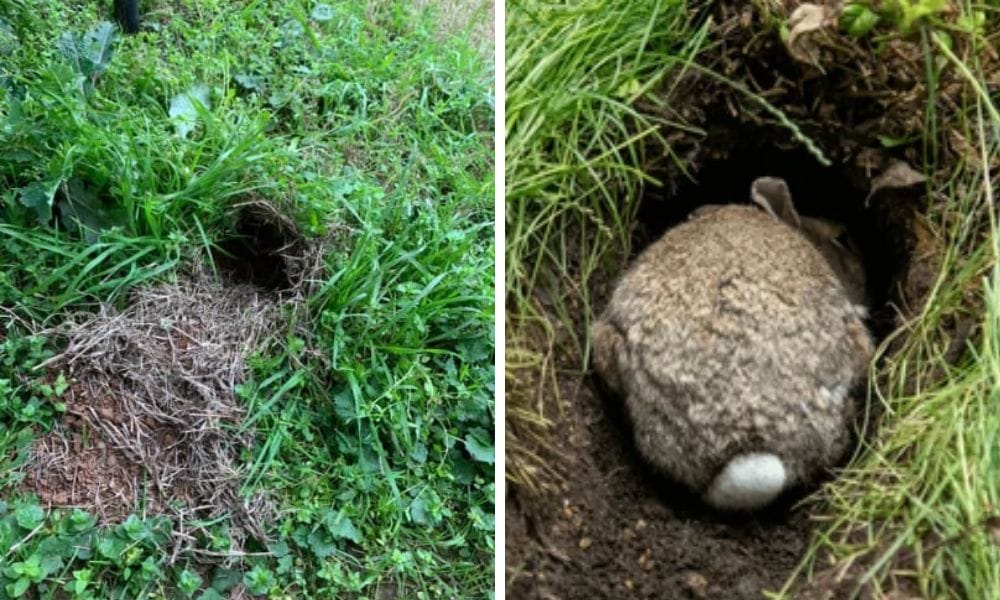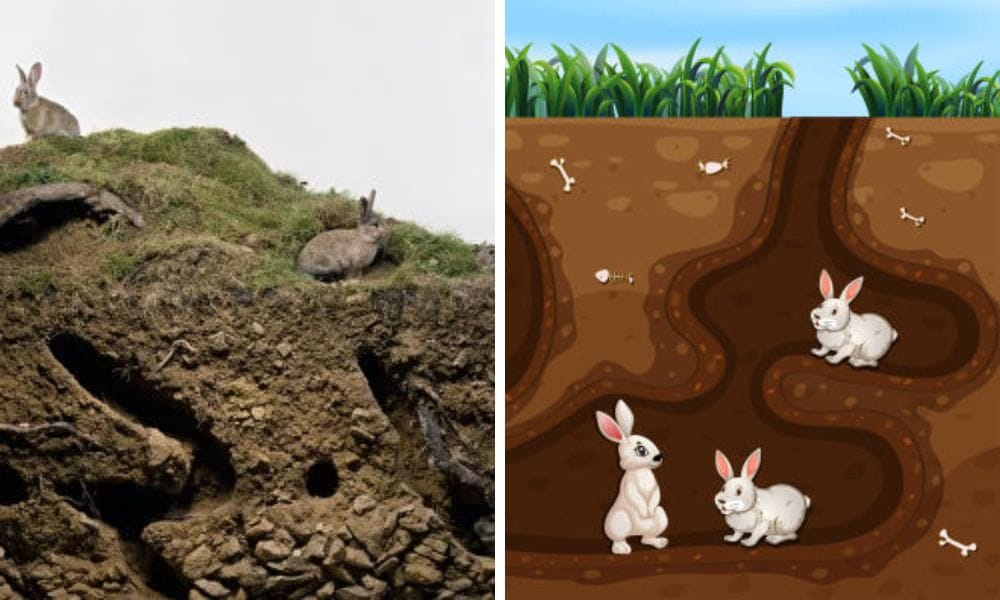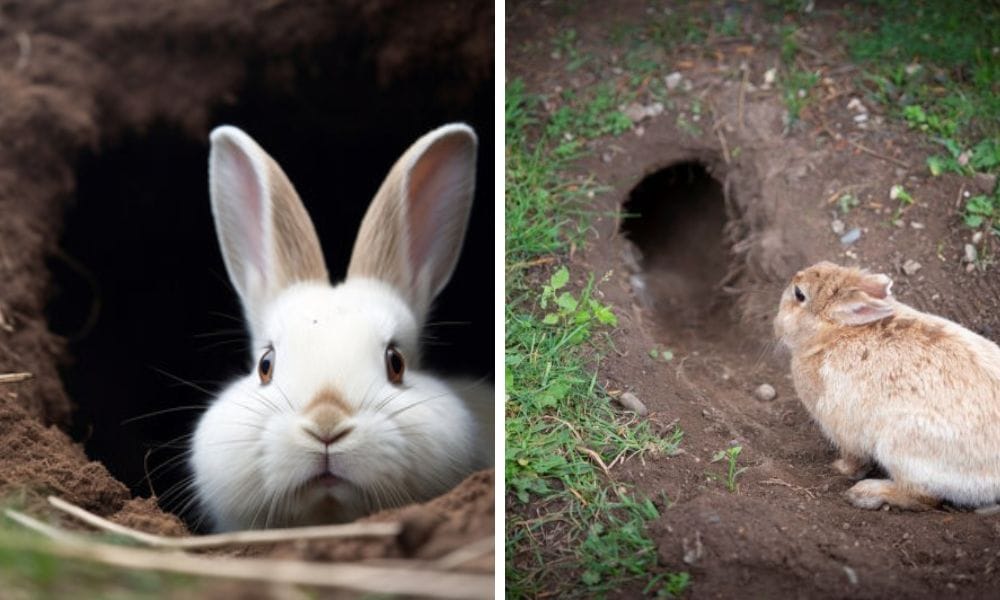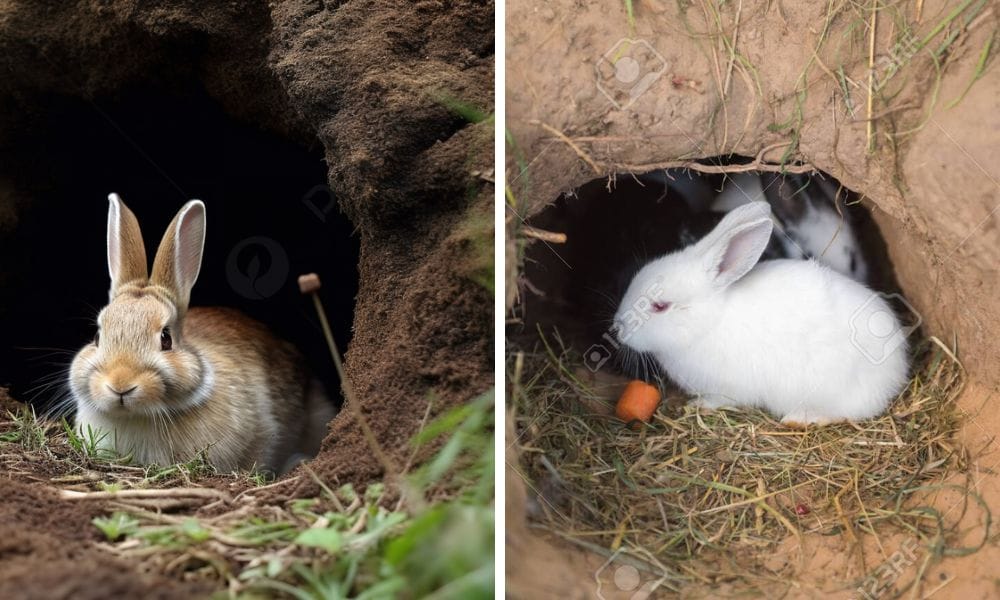Unveiling the Mysteries: What Does a Rabbit Hole Look Like?
Have you ever fallen into a rabbit hole while browsing the internet and wondered what it actually looks like? Today we're going to show you the wild world of rabbit holes and trust me, it's not what you expected.

Key Takeaways:
- Understand the physical characteristics of rabbit holes and how they serve as a safe haven for rabbits.
- Learn about the differences between rabbit burrows and the burrows of other burrowing animals.
- Discover how to identify rabbit holes in your yard or garden and what steps to take if you find one.
Rabbit holes are more than just an entry to a wonderland; they are intricate structures that serve as homes and safe havens for wild rabbits. Understanding what a rabbit hole looks like can be fascinating and useful, especially if you're a homeowner, gardener, or wildlife enthusiast. In this article, we'll explore the characteristics of rabbit holes, how rabbits use them, and how you can identify them.
The Entrance to a Hidden World: Rabbit Burrows
When you think of rabbit holes, you might imagine the burrow entrance that leads to a complex series of tunnels underground. These entrances are typically round in shape and can range in diameter, generally measuring between 10 to 15 centimeters. The burrow entrance is often surrounded by loose soil, a result of the digging process, and may be lined with fur to provide insulation and comfort for the rabbits inside.
Rabbit burrows, also known as a rabbit warren, are not just simple holes in the ground; they are a network of tunnels that slope inwards at a shallow angle. The tunnels can extend several meters in length and connect to various chambers used for nesting, resting, and as emergency exits. The main entrance is usually wider and may have multiple paths leading away from it, indicating the presence of an active warren.

A Safe Haven for Baby Bunnies: The Rabbit's Burrow
Rabbit burrows serve as a safe haven for baby bunnies, providing protection from predators and harsh weather conditions. The breeding chambers within the warren are lined with grass, fur, and vegetation to create a warm and secure environment for the young. These chambers are located deeper within the warren to ensure maximum safety.
The presence of rabbit droppings near the entrance can also be an indicator of an active burrow. Rabbit droppings are small, round pellets that are often found in piles. These droppings not only signify that rabbits live in the area but also provide valuable nutrients that enrich the soil and support the surrounding vegetation.
The Architectural Marvel: Design of a Rabbit Burrow
Have you ever wondered about the architectural prowess behind a rabbit burrow? It's not just a simple hole in the ground; it's a complex, multi-chambered structure designed for survival. The entrance, often concealed among vegetation, leads to a network of tunnels that can extend several feet deep. This intricate design keeps the burrow at a stable temperature and protects the rabbits from extreme weather conditions and predators.

The Burrow Ecosystem: A Hub for Various Creatures
Rabbit burrows are not exclusive to rabbits; they often become a hub for various other creatures. Once abandoned, these animal burrows can provide shelter for a myriad of wildlife, including amphibians, small mammals, and invertebrates. The abandoned burrows offer a ready-made home for these creatures, saving them the energy and danger of constructing their own. It's like a real estate market down there, with burrows being passed on from one tenant to another!

The Inhabitants of the Underground: Wild Rabbits and Other Animals
Wild rabbits, particularly the European rabbit, are the primary architects of these burrows. However, not all rabbits dig holes; species like hares do not create burrows and instead nest in shallow depressions on the ground. It's important to note that other animals, such as foxes and badgers, may also inhabit or take over abandoned rabbit burrows, making it a shared space among different wildlife species.
Rabbit holes can sometimes be mistaken for the burrows of other burrowing animals. To accurately identify a rabbit's burrow, look for signs of rabbit activity, such as tracks, fur, and the aforementioned droppings. The location of the hole can also provide clues; rabbit holes are often found in areas with plenty of cover, such as woods, thickets, or under tree roots, to protect them from predators.
The Impact on Your Yard: Identifying and Coexisting with Rabbit Holes
Finding rabbit holes in your yard or garden can be a sign of a healthy ecosystem, but it can also pose challenges for homeowners. To identify rabbit holes, look for the characteristic entrance, loose soil, and signs of rabbit activity. If you find a rabbit hole, it's important to avoid disturbing it, as rabbits are a protected species in many areas, and their burrows are crucial for their survival.
If rabbit holes are causing issues in your garden, there are humane ways to deter rabbits without harming them. Fencing off certain areas, using rabbit repellents, and planting vegetation that rabbits find unappealing are all effective strategies. Remember, it's essential to coexist with wildlife and protect these creatures that play a vital role in our ecosystem.

The Allure of the Rabbit Hole: A Symbol in Culture and Literature
The rabbit hole has become a symbol of curiosity and the unknown, largely due to its portrayal in literature, such as Lewis Carroll's "Alice's Adventures in Wonderland." The image of the white rabbit leading Alice down the rabbit hole has captivated the imagination of readers for generations, representing the journey into a new and unexplored world.
In a broader sense, the term "rabbit hole" has come to describe any complex, multifaceted situation or a venture into something that leads to a series of unexpected discoveries. This cultural significance adds an element of wonder and intrigue to the simple act of observing rabbit holes in the wild.
Summary
Rabbit holes are fascinating structures that provide shelter, protection, and a breeding ground for wild rabbits. They are characterized by their round entrance, complex series of tunnels, and the presence of rabbit droppings and fur. While they can be a nuisance in gardens and yards, it's important to identify and manage them responsibly, respecting the wildlife that depends on them. By understanding what a rabbit hole looks like and its purpose, we can appreciate these natural wonders and the creatures that create them.
FAQ Section
Q: Can I remove a rabbit hole from my yard? A: It's best to avoid disturbing rabbit holes, as they are important for the rabbits' survival and may be protected by local wildlife laws. If the hole poses a significant problem, consult with wildlife experts for humane solutions.
Q: How can I tell if a rabbit hole is active? A: Look for fresh signs of activity, such as loose soil at the entrance, rabbit droppings, fur, and tracks. An active hole will often have multiple paths leading away from the main entrance.
Q: Are rabbit holes dangerous to humans or pets? A: Rabbit holes can pose a tripping hazard in your yard, and curious pets may disturb the rabbits or get stuck. It's important to monitor the area and take precautions to prevent accidents.
